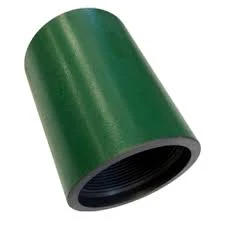- Afrikaans
- Albanian
- Amharic
- Arabic
- Armenian
- Azerbaijani
- Basque
- Belarusian
- Bengali
- Bosnian
- Bulgarian
- Catalan
- Cebuano
- Corsican
- Croatian
- Czech
- Danish
- Dutch
- English
- Esperanto
- Estonian
- Finnish
- French
- Frisian
- Galician
- Georgian
- German
- Greek
- Gujarati
- Haitian Creole
- hausa
- hawaiian
- Hebrew
- Hindi
- Miao
- Hungarian
- Icelandic
- igbo
- Indonesian
- irish
- Italian
- Japanese
- Javanese
- Kannada
- kazakh
- Khmer
- Rwandese
- Korean
- Kurdish
- Kyrgyz
- Lao
- Latin
- Latvian
- Lithuanian
- Luxembourgish
- Macedonian
- Malgashi
- Malay
- Malayalam
- Maltese
- Maori
- Marathi
- Mongolian
- Myanmar
- Nepali
- Norwegian
- Norwegian
- Occitan
- Pashto
- Persian
- Polish
- Portuguese
- Punjabi
- Romanian
- Russian
- Samoan
- Scottish Gaelic
- Serbian
- Sesotho
- Shona
- Sindhi
- Sinhala
- Slovak
- Slovenian
- Somali
- Spanish
- Sundanese
- Swahili
- Swedish
- Tagalog
- Tajik
- Tamil
- Tatar
- Telugu
- Thai
- Turkish
- Turkmen
- Ukrainian
- Urdu
- Uighur
- Uzbek
- Vietnamese
- Welsh
- Bantu
- Yiddish
- Yoruba
- Zulu
drill pipe pup joint
Understanding Drill Pipe Pup Joints A Vital Component in Drilling Operations
In the world of drilling, particularly in oil and gas exploration, various components come together to ensure efficient and effective operations. One such component is the drill pipe pup joint. While often overlooked, pup joints play a crucial role in the overall integrity and functionality of drill strings. Understanding pup joints, their types, applications, and significance in drilling operations sheds light on their importance in the oil and gas industry.
What is a Drill Pipe Pup Joint?
A drill pipe pup joint is a short length of pipe used to adjust the overall length of the drill string. Typically, pup joints range from 2 to 10 feet in length and are designed to be compatible with standard drilling pipe. They are mainly used to make minor adjustments in the length of the drill string without the need for additional full-length drill pipes. This feature is particularly valuable when precision is required for specific drilling depths and angles.
Types of Pup Joints
Pup joints come in various types, primarily categorized based on their diameter and wall thickness. The most common types include
1. Regular Pup Joints These are standard pup joints with diameters that match standard drill pipes. They are used to fill in the gaps when a full-length pipe is unnecessary.
2. Heavyweight Pup Joints Designed with thicker walls, heavyweight pup joints provide additional strength and durability, making them suitable for high-pressure applications.
3. Tail Pipe Joints These specialized joints are used to transition from a drill string to a casing string, allowing for more versatility during drilling operations.
Each type of pup joint serves a specific purpose, contributing to the overall efficiency and safety of drilling projects
.Applications of Pup Joints
drill pipe pup joint

Pup joints are utilized in various scenarios within drilling operations, including
- Length Adjustment Pup joints allow for fine-tuning the length of the drill string, which is crucial when drilling at specific depths or navigating geological formations.
- Pressure Management In high-pressure drilling environments, heavyweight pup joints provide additional support to handle the stresses involved.
- Enhanced Rig Operations The use of pup joints during rig operations can help streamline processes, allowing for quicker adjustments and reducing downtime.
- Casing and Completion Pup joints are also used in the casing and completion stages of drilling, helping to create a seamless connection between different components.
The Importance of Quality Control
In drilling operations, the integrity of each component is paramount. Pup joints, though short, must meet stringent quality standards to ensure safety and performance. Manufacturers typically adhere to industry certifications such as API (American Petroleum Institute) specifications, which dictate the necessary requirements for drill pipe products. Regular inspections and quality control measures are essential to prevent potential failure during drilling operations, which can lead to costly downtime and safety hazards.
Conclusion
In summary, drill pipe pup joints play a vital role in the functionality and efficiency of drilling operations. Their ability to make minor adjustments to the drill string length not only facilitates precise drilling but also enhances overall rig operations. With various types of pup joints available, each serves distinct applications, further illustrating their versatility in the oil and gas industry.
Understanding the significance of pup joints highlights their contribution to the overall safety and success of drilling activities. As the industry continues to evolve, maintaining high standards for pup joint manufacturing and inspection will remain crucial in ensuring reliable and safe drilling operations. For professionals in the field, recognizing the importance of these seemingly minor components can make a substantial difference in the efficiency and efficacy of drilling projects.
-
Tubing Pup Joints: Essential Components for Oil and Gas OperationsNewsJul.10,2025
-
Pup Joints: Essential Components for Reliable Drilling OperationsNewsJul.10,2025
-
Pipe Couplings: Connecting Your World EfficientlyNewsJul.10,2025
-
Mastering Oilfield Operations with Quality Tubing and CasingNewsJul.10,2025
-
High-Quality Casing Couplings for Every NeedNewsJul.10,2025
-
Boost Your Drilling Efficiency with Premium Crossover Tools & Seating NipplesNewsJul.10,2025







